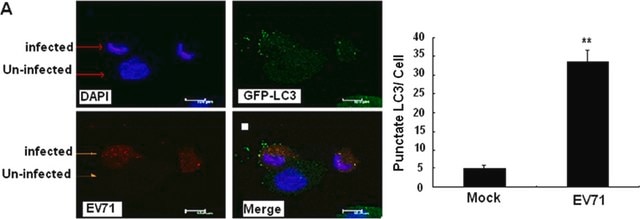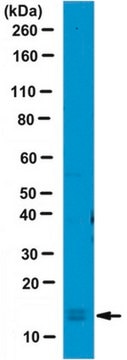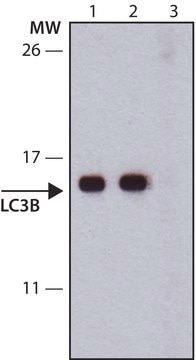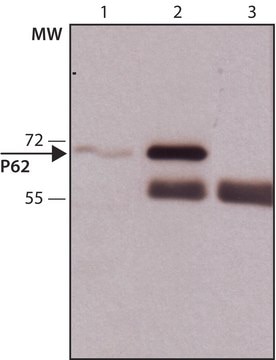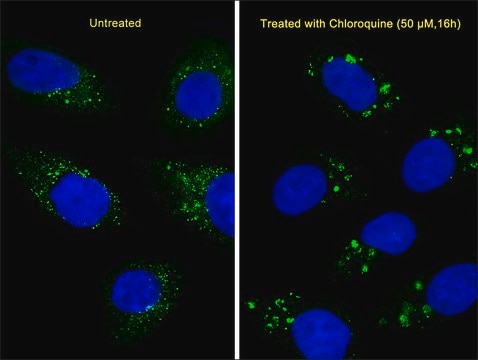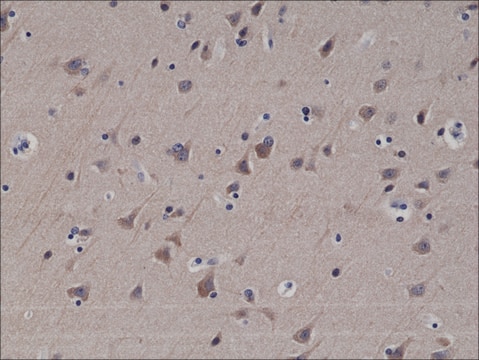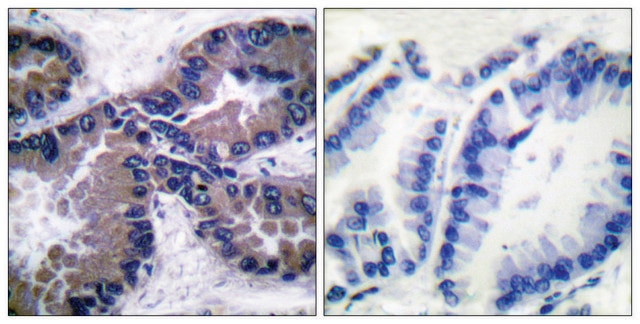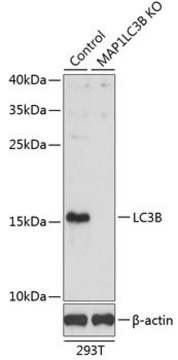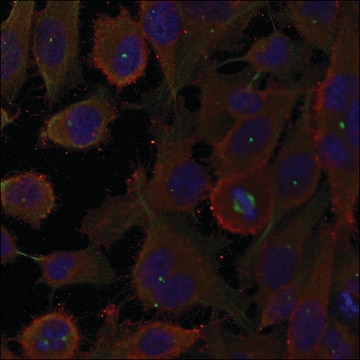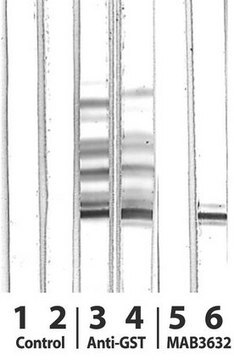ABC929
Anti-LC3-I/II Antibody
from rabbit, purified by affinity chromatography
Synonym(s):
Microtubule-associated proteins 1A/1B light chain 3A, Autophagy-related protein LC3 A, Autophagy-related ubiquitin-like modifier LC3 A, MAP1 light chain 3-like protein 1, MAP1A/MAP1B light chain 3 A, Microtubule-associated protein 1 light chain 3 alpha
About This Item
Recommended Products
biological source
rabbit
Quality Level
antibody form
affinity isolated antibody
antibody product type
primary antibodies
clone
polyclonal
purified by
affinity chromatography
species reactivity
human
species reactivity (predicted by homology)
Xenopus (based on 100% sequence homology), rat (based on 100% sequence homology), porcine (based on 100% sequence homology), mouse (based on 100% sequence homology), zebrafish (based on 100% sequence homology), bovine (based on 100% sequence homology)
technique(s)
immunocytochemistry: suitable
western blot: suitable
NCBI accession no.
UniProt accession no.
shipped in
wet ice
target post-translational modification
unmodified
Gene Information
human ... MAP1A(4130) , MAP1LC3A(84557)
General description
Specificity
Immunogen
Application
Apoptosis & Cancer
Apoptosis - Additional
Quality
Western Blotting Analysis: A 1:500 dilution of this antibody detected LC3-I (non-lipidated) and LC3-II (lipidated) in 10 µg of serum-starved, chloroquine-treated HeLa cell lysate.
Target description
Linkage
Physical form
Storage and Stability
Other Notes
Disclaimer
Still not finding the right product?
Give our Product Selector Tool a try.
recommended
Storage Class
12 - Non Combustible Liquids
wgk_germany
WGK 1
flash_point_f
Not applicable
flash_point_c
Not applicable
Certificates of Analysis (COA)
Search for Certificates of Analysis (COA) by entering the products Lot/Batch Number. Lot and Batch Numbers can be found on a product’s label following the words ‘Lot’ or ‘Batch’.
Already Own This Product?
Find documentation for the products that you have recently purchased in the Document Library.
Customers Also Viewed
Articles
Autophagy is a highly regulated process that is involved in cell growth, development, and death. In autophagy cells destroy their own cytoplasmic components in a very systematic manner and recycle them.
Our team of scientists has experience in all areas of research including Life Science, Material Science, Chemical Synthesis, Chromatography, Analytical and many others.
Contact Technical Service